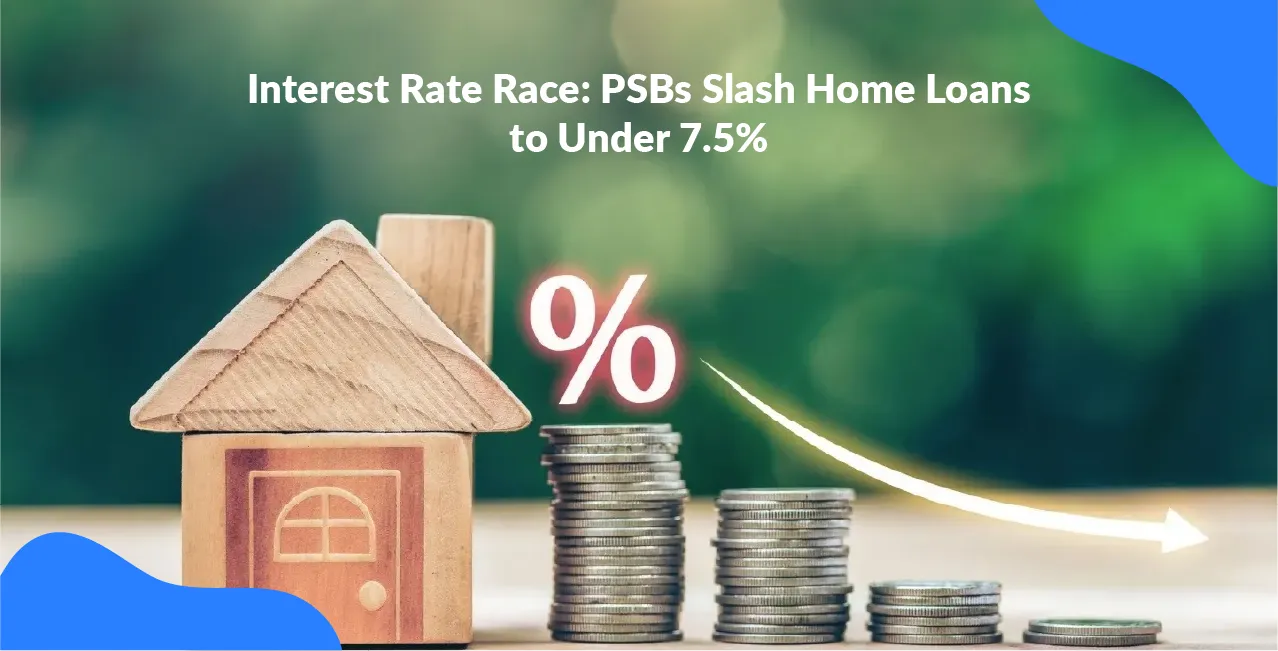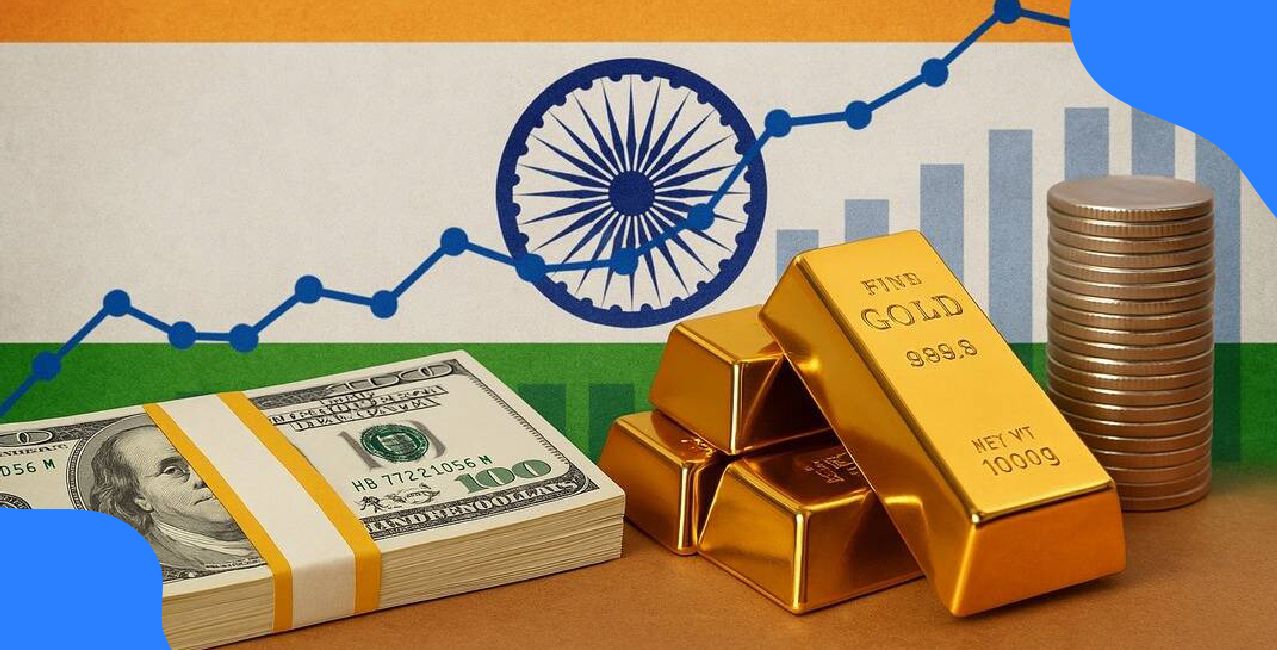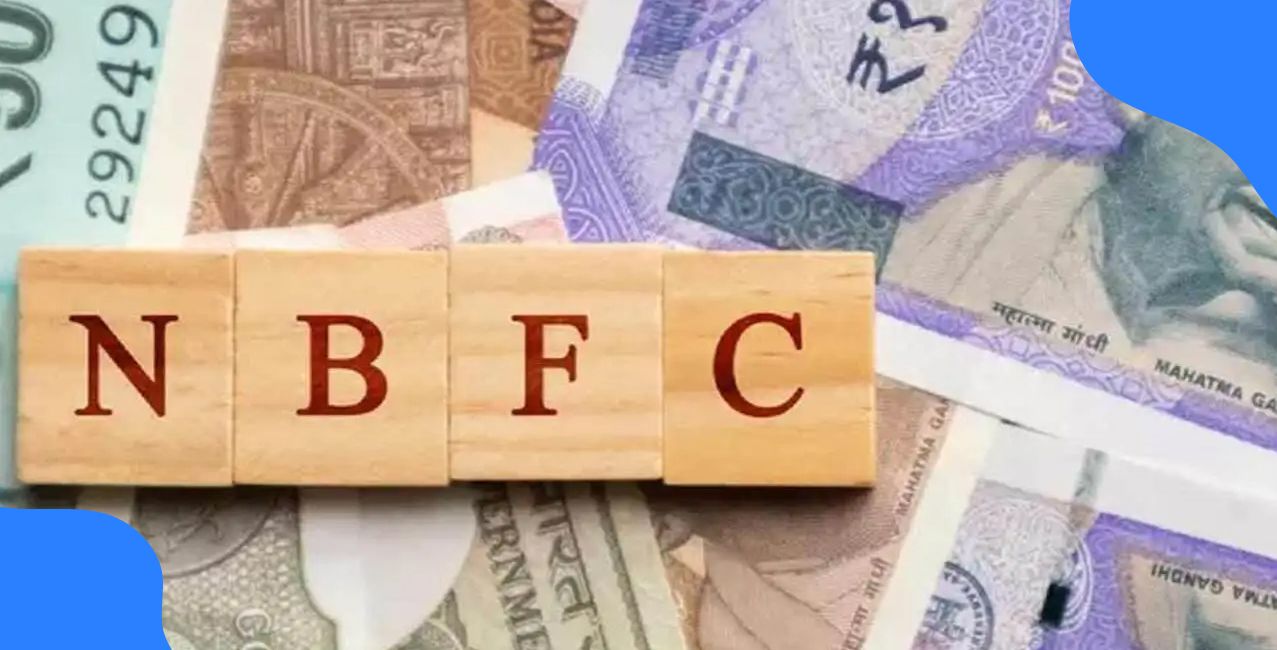
Author
LoansJagat Team
Read Time
4 Min
08 Jul 2025
Interest Rate Race: PSBs Slash Home Loans to Under 7.5%
Borrowers With Steady Incomes Are Now Quietly Benefiting From Falling Home Loan Rates at Public-sector Banks
Several home buyers hesitated to lock in housing loans only six months ago due to rising interest rates. Bank branches reported longer waiting periods for loan approval as customers weighed their options carefully.
Recent cuts in the RBI’s lending rate have made many borrowers rethink their plans. For the first time in over two years, home loan rates at public sector banks have dropped below 7.5%.
Read More – Public vs Private Banks: Compare the Cheapest Home Loan Offers Following RBI’s 50 bps Rate Cut
The shift began with a 25 basis point repo rate cut in February, followed by a bigger cut in June, bringing it to 5.50%. These changes lowered loan costs, especially at banks that link rates to the repo.
Bank Actions Followed the RBI’s Lead
Soon after the RBI’s latest announcement on June 6, many PSBs updated their lending rates. Bank of Baroda, for example, announced a 40 basis point cut in its home loan rate starting May 5. Bank of Maharashtra followed with a 50 basis point reduction on June 10.
These rate cuts pushed home loan interest below 7.5% for most borrowers with good credit scores. Other banks like PNB, Bank of India, and Indian Bank also lowered rates to stay competitive.
The RBI’s June repo cut aimed to boost lending, especially for home buyers, and PSBs responded quickly. For those under the RLLR system, the new rates took effect automatically.
Here’s how the latest interest rate reductions look across central public sector banks:
With the base rates now well under the 8 per cent mark, PSBs have strengthened their appeal to middle-income borrowers. That means homebuyers in cities and semi-urban areas now see lower EMIs and better chances of approval.
Lower EMIs Bring Real Savings
For most salaried individuals, monthly savings on EMIs matter more than interest percentages. The drop in rates is already affecting EMI schedules, especially for those who borrowed large sums in recent years.
Consider this: for a home loan of ₹45 lakh with a 20-year tenure, a 50 basis points cut in the rate can reduce monthly EMIs by around ₹2,850. That translates into savings of more than ₹6.80 lakh across the loan period. These numbers are not assumptions. They are based on official rate calculations across various PSBs after the June cuts.
Here’s a sample breakdown:
The fall in EMIs could push more people into home ownership, especially in markets where affordability was a major hurdle.
RLLR Ensures Fast Transmission
One aspect that often goes unspoken is how fast rate cuts pass to borrowers. This is because of the RLLR model. Repo Linked Lending Rate is a system where banks link the interest rates they charge on loans (like home loans) directly to the RBI’s repo rate.
Since October 2019, all banks have had to link their floating-rate home loans to an external benchmark, most commonly, the repo rate. That means any change announced by the RBI must be reflected in home loan rates within days.
Also Read - Home Loan Interest Rates Drop to a 5-Year Low: Is 2025 the Best Time to Buy?
This new framework has brought clarity and uniformity. Earlier, banks took months to adjust their rates. Now, as seen this year, most PSBs updated their home loan rates within one week of the RBI’s June decision.
Below is how repo rate changes have impacted lending:
The external benchmark system has added speed and accountability. This benefits new borrowers and existing customers whose rates get adjusted automatically.
Who Benefits The Most?
Borrowers with high credit scores and salaried income profiles benefit the most. Many PSBs have separate interest rate slabs based on credit score and loan amount.
For example, Bank of India offers its "Star Diamond Home Loan" at a starting rate of 7.35 per cent to borrowers with a CIBIL score above 760. Similarly, Punjab and Sind Bank offers 8.05 per cent to top-tier profiles under its "PSB Apna Ghar" scheme.
So while the base rates are under 7.5 per cent, some borrowers with strong profiles are getting even better deals.
Conclusion
If the inflation rate stays stable, the coming quarter could witness more demand for home loans. RBI is expected to maintain its accommodative stance unless inflation forces a change. For now, borrowers enjoy a rare stretch of low interest rates and flexible loan terms.
This may not last forever. But for now, the home loan race has favoured the public sector banks. And homebuyers are making the most of it.
Other News Pages | ||
73% ATMs Now Dispensing ₹100 & ₹200 Notes Before RBI Deadline | Supreme Court: Banks Cannot Revalue Gold After Loan Repayment | |
About the Author

LoansJagat Team
‘Simplify Finance for Everyone.’ This is the common goal of our team, as we try to explain any topic with relatable examples. From personal to business finance, managing EMIs to becoming debt-free, we do extensive research on each and every parameter, so you don’t have to. Scroll up and have a look at what 15+ years of experience in the BFSI sector looks like.

Quick Apply Loan
Subscribe Now
Related Blog Post

LoansJagat Team • 11 Dec 2025

LoansJagat Team • 11 Dec 2025

LoansJagat Team • 12 Dec 2025